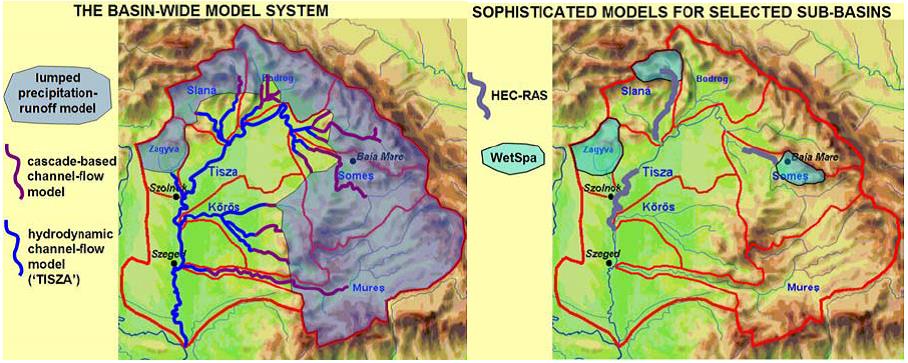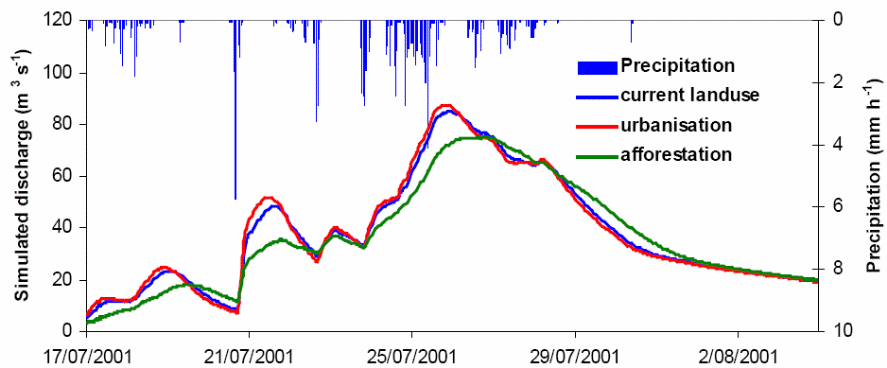Introduction
In huge worldwide river basins, like the Tisza River Basin with its 157,000 km2 catchment area and 15 transboundary “first-order tributary” rivers, the water – end ecological matters to be solved including almost every possible type of water reserve organization, water contamination control, and aquatic-ecological protection/ conservation issues that the communities and the scientists have found out so far. Of this huge figure and type of matters (argued in profound particulars in the pertinent project statements), a set of the most pressing ones had been chosen and within those the explanation of which can be maintained by computer modeling means. These means, when collected together, might be recalled the “real-life-scale incorporated catchment reproductions,” as named in the sub-title of the Project. Lots of attempts were, and are being, made international, but very few real-life-scale, large catchment-size functions, with the notion of reaching actual organization-support level, are known. The major issue is probably that the tools are far more enhanced than the databases. This later is due to the universal lack and accessibility of information, which could maintain the use of incorporated replicas. The likely solution to this problem is the development of a set of module-like modeling tools and adjoining databases, which can supplely be created, adapted to definite needs and information.

Technological and economic objectives
Transnational water resource management and environmental protection matters are of major anxiety internationally. In Europe, this anxiety is noticeably augmented upon the disastrous trans-national cyanide and heavy metal contamination catastrophes of the year 2000 in the Tisza River Catchment. The scarcity of sufficiently clean water resources and the dangers faced by the regionally (and possibly internationally) unique freshwater wetland bio networks intensified the matters. These are the main causes why the Tisza River Basin was chosen as the only catchment of any project. Another reason is the size (157,200 km2) of the catchment and its exceptional geographical position. The Tisza basin is located almost precisely in the geographical center of Europe and crosses the near-future boundary of the European Union. The outstanding natural ecological values, the tremendous hazards of both the excess and scarcity of water, the multiple hazards of dispersing and point source contamination, the clicking time-bomb of further potential accidents, and the very high all-European political, social, and financial anxieties uncomplicatedly describe the objectives of the Project:
To help to save the water resources and ecological values with the help of integrated catchment management tools and to secure the sustainable use of the resources of the Tisza River Basin.
Since very few (if any) really successful and efficient integrated management and decision support modeling case studies of large international catchments are known, the main objective was to make one, which can provide a head-start concept for necessary development work, especially in pre-accession state countries.
Projects
The WetSpa reproduction was practiced in the Hornady River basin, situated in the upper northwest part of the Tisza basin. Its area is about 4260 km2, and its mean slope is 17.6%. The land use in the basin is covered by forest, plains, and farming. The existing soil type is silt loam. The basin has a northern moderate climate with distinct seasons. The model was applied to predict runoff on a daily basis for the 10 years time period 1991-2000, with a cell size of 100 m. For precipitation, 44 stations with daily measurements were available.
Based on the model results, the average calculated potential runoff coefficient in the catchment was found to be 0.42, and the flow time is on average 32.8 hours. Simulated discharges at the outlet of the catchment compare well with the measured discharges at the gauging station Zdana. The figure shows the comparison for the year 1997. The model reproduces the snowmelt flood and three summer floods well.

The hourly-simulated discharges for the current land use, urbanization, and afforestation scenarios, in the Tisza catchment.
Within Newater, the participation of stakeholders plays a crucial role in guaranteeing that the methods and tools which are going to be developed to guide and support the transition to adaptive water management regimes are tailored to the case-specific conditions. By using the concerns, demands, knowledge, and expertise of the stakeholders involved in the participatory process, a scientific basis for better understanding the requirements for adaptive water management regimes and for developing a sound methodology can be established to assess, evaluate and implement new management strategies appropriate for the environmental, economic, institutional, social and cultural setting in the respective river basin (cf. Pahl-Wostl, 2005). Thus the intensive dialogue between science and the various stakeholders offers the opportunity for a mutual development, assessment, enhancement, and implementation of new or already existing concepts, methods, and tools. In the Tisza Case Study, this participatory process was organized and conducted in collaboration with our local Hungarian and Ukrainian scientific partners, which have been contacted and integrated into the Tisza Case Study team in the preparation phase of the project. For their selection, their command in water and river basin-related scientific background, as well as their involvement in national and international projects on water and river basin management, was decisive.
Together with the local scientific partners, the stakeholder elicitation process was initiated, taking into account the idea to involve key stakeholders and experts from different levels such as ministries, regional and local water management as well as NGOs.
Own solution
One of the alternative solutions to the matter of water contamination is to fix it legally by setting the range of fines for the measures of contamination for each enterprise, forcing them to implement the filtering systems to the industrial process.
The propaganda should be held as the tool of public thought change in order the citizens were involved in the process of environmental protection and the prevention of water contamination.
Conclusion
It is necessary to mention that the implementation of any project may have a series of very significant behaviors on both the achieving of the social and the economic objectives of the nations of the Tisza River catchment and also may have a significant impact on those of the Community as a whole. This is so because the three main problem areas addressed in this have a very strong -if not deterministic- impact on both the economic conditions and on the quality of life in this river basin, which latter is predominantly defined by that of the water. The major policy implication is that the results of this project (the database and the models) can provide vital assistance to the River Basin Management Planning required for the Water Framework Directive.
References
Jancar-Webster, Barbara, ed. Environmental Action in Eastern Europe: Responses to Crisis. Armonk, NY: M. E. Sharpe, Inc., 2003.
Wainwright, John, and John B. Thornes. Environmental Issues in the Mediterranean: Processes and Perspectives from the Past and Present. London: Routledge, 2004.
Karin Burnod-Requia Rapid environmental assessment of the Tisza River basin United Nations Environment Programme 2004.